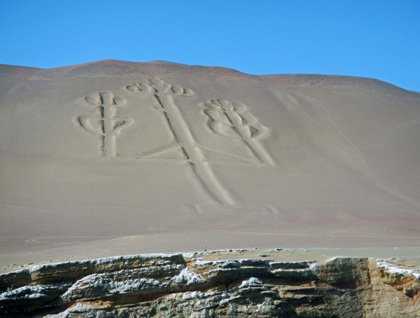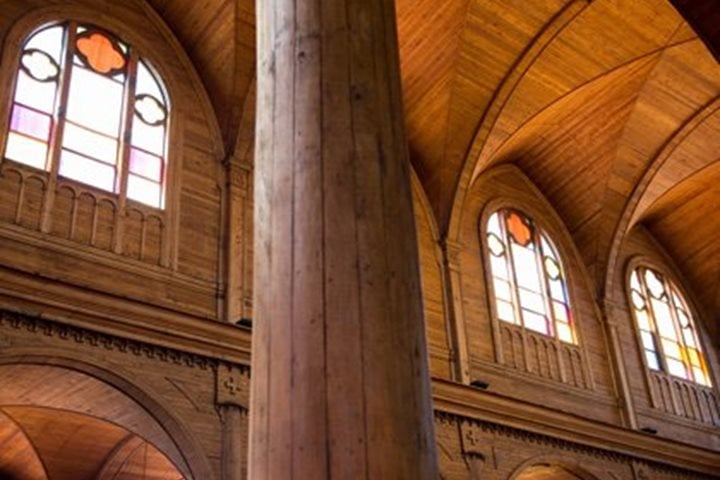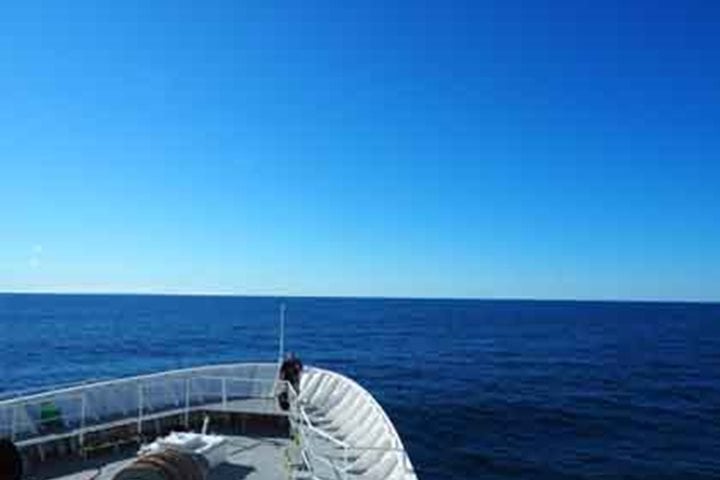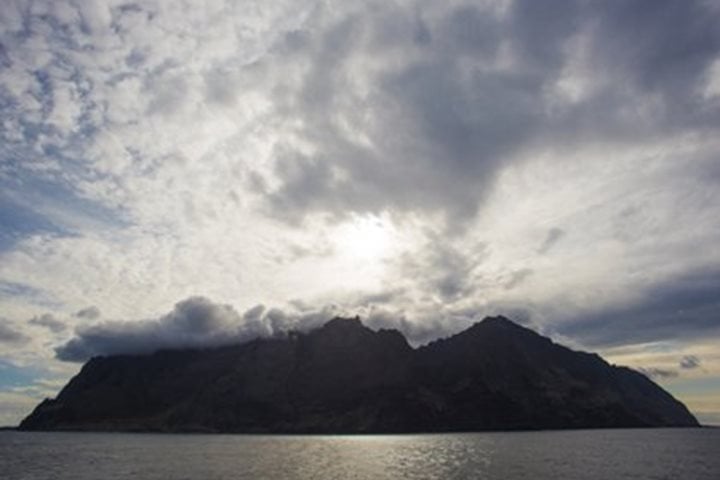Today was the first day of our voyage in Peru and Chile and we began in one of the most interesting parts of the Peruvian Coast—the Paracas Peninsula. Located south of Lima and Callao, Paracus is the largest peninsula along this coast and is the remnant of an earlier coast range. The port of Pico on the peninsula is the second largest in the country and ships nitrate, copper, and fishmeal out and petroleum and other commodities in. North of the peninsula are the famous Chincha Islands, the major source of the fantastically rich guano trade between the middle of the 19th century and the middle of the 20th. We visited some smaller but no less spectacular islands called Islas Ballestras. The name means “cross-bow” and refers to the many arches cut by the waves through the islands. On the way we saw the famous “Caldelabra” glyph on the coast of the peninsula. At the islands we were able to see thousands of nesting Peruvian boobies and Peruvian pelicans and millions of Guanay cormorants, the major source of the guano deposits. When guano mining began on the Chincha Islands in about 1850, the deposits were as much as 50m thick. We also saw the beautiful Nazca terns, red-legged cormorants, and South American sea lions on the beaches and in the water.
We returned to the ship in late morning and heard a presentation by Johan Reinhard our National Geographic archeologist who has done some of the most important work on mummies of the Andes and other aspects of Inca and Nazca archeology. After lunch we docked National Geographic Explorer at the Paracas port and departed on our afternoon excursions, one to the Tambo Colorado Archeological site and the other to the Paracas National Reserve in search of more wildlife.
Those who visited the Tamob Colorado site were able to walk among the well-restored ruins of a large palace which the Incas built as they extended their administrative reach from the high Andes down to the coastal region in search of trade and conquest. There is a large palace courtyard overlooking the verdant Pisco River valley. Essentially all the irrigation water for the coastal areas of southern Peru is provided by rivers flowing down from the high Andes and at Tambo Colorado the builders, probably near the end of the 15th century, included an aqueduct to bring water from the river to the site and provide water for the palace, including several large baths. It was an altogether exciting and very full day of experiences with the rich wildlife of Paracas and the equally rich cultural history of Peru.



.jpg?width=106&height=85&mode=crop&scale=both&quality=50)



